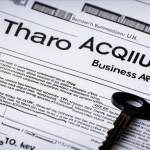Understanding Key UK Business Legal Structures
Choosing the right UK business formation is crucial, as each legal structure offers distinct features and suits different scenarios. The three main types are sole trader, partnership, and limited company.
A sole trader is the simplest structure: one individual owns and manages all aspects. It offers full control but also full personal liability for debts and losses. This format is often ideal for freelancers or small, low-risk businesses.
In parallel : What Influences the Choice of Business Structure in the UK?
A partnership involves two or more people sharing responsibility, profits, and liabilities. Partnerships suit ventures where combined skills and resources benefit the business but still carry personal liability for business debts unless structured differently, like a limited liability partnership.
In contrast, a limited company is a separate legal entity, offering liability protection to owners (shareholders). This means personal assets are generally safeguarded. Limited companies come with more regulatory requirements but are better suited for businesses intending to grow or seek investment.
In the same genre : What Are the Main Challenges in Starting a Business in the UK Today?
Understanding these differences helps match the legal structure to your operational needs, potential risks, and growth ambitions — a critical first step in setting up a prosperous business in the UK.
Pros and Cons of Each UK Business Structure
When evaluating UK business types, understanding their advantages and disadvantages helps navigate business setup wisely. The sole trader structure offers simplicity and full control but poses unlimited personal liability. It’s ideal for small-scale or low-risk ventures that value ease and flexibility over protection.
Partnerships bring shared decision-making and resource pooling, which can accelerate growth and broaden skills. However, unless set up as a limited liability partnership, partners share personal liability for debts. This structure suits professional services or family businesses that benefit from joint management.
A limited company provides significant liability protection by separating personal and business assets. This legal structure demands stricter compliance requirements and administrative effort but enables scalability and investment opportunities. It is particularly well-suited for businesses aiming to expand or attract funding.
In summary:
- Sole trader: Simple, flexible, but unlimited personal liability.
- Partnership: Shared risk and resources, with possible personal liability.
- Limited company: Strong liability protection, suitable for growth, requires compliance.
This legal structure comparison clarifies how each option balances risk, control, and operational complexity, guiding business owners toward appropriate choices.
Tax Implications and Financial Considerations
When choosing a UK business formation, understanding tax obligations is essential. A sole trader reports business profits on their personal tax return, paying income tax and National Insurance contributions. This means simplicity but potentially higher tax rates as profits grow.
For partnerships, tax treatment is similar: each partner declares their share of profits individually, incurring income tax accordingly. This offers tax flexibility but requires clear agreements on profit distribution.
A limited company faces corporation tax on its profits, currently set at a flat rate, which can be more tax-efficient for higher earnings. Shareholders pay income tax only on dividends received, allowing for strategic financial planning and profit retention within the company.
Financial efficiency varies greatly. Limited companies can benefit from UK business tax benefits such as deductible expenses and dividend taxation advantages, supporting reinvestment and growth. However, enhanced compliance and accounting costs apply.
Effective tax planning involves assessing expected profits, reinvestment plans, and personal income needs. Choosing the right legal structure influences overall tax liability and cash flow, making financial considerations a pivotal part of solid business formation decisions.
Liability, Risk Management, and Compliance Requirements
Choosing the right UK business formation significantly affects your liability protection and business risk management. A sole trader faces unlimited personal liability, meaning personal assets are at risk if the business incurs debt or legal claims. Compliance requirements are minimal, but this exposes the owner to higher financial risks.
In a partnership, liability depends on the type: traditional partnerships share unlimited personal liability among partners, increasing collective risk. However, forming a limited liability partnership (LLP) provides protection, separating personal assets from business debts. Partnerships require agreements detailing responsibilities and profit-sharing, ensuring some risk control.
A limited company offers the strongest liability protection since it is a separate legal entity. Shareholders’ risks are typically limited to their investment. However, legal compliance is more stringent, involving regular filing of accounts, maintaining statutory registers, and adhering to corporate governance standards. These compliance obligations help reduce legal risks but demand administrative commitment.
Effective risk management involves aligning the choice of legal structure with your tolerance for liability and your ability to meet compliance duties. Understanding these elements ensures informed decision-making, helping protect personal assets while fulfilling regulatory responsibilities.
Strategic Tips for Choosing and Leveraging the Optimal Structure
Selecting the right UK business formation involves aligning your business structure selection with both current needs and future goals. Start by assessing your business size, expected growth, and risk tolerance. For example, a sole trader might suit solo ventures seeking simplicity, whereas a partnership benefits enterprises relying on combined skills. A limited company often fits businesses targeting investment and scalable operations.
To optimise your legal structure, consider how it affects funding options, tax planning, and liability. A limited company can attract investors due to its clear legal status and limited personal liability, while a partnership allows flexibility in management shared among members. Think also about administrative capacity; more complex compliance of a limited company demands resources but offers protection and credibility.
Maximise your business growth in the UK by reviewing your structure periodically. As your business evolves, restructuring or incorporating may open doors for funding or exit strategies, like selling shares or bringing in partners. Proper business structure optimization involves consulting experts to tailor your approach, ensuring legal and financial frameworks support sustainability and expansion. This strategic mindset drives long-term success in the competitive UK market.







